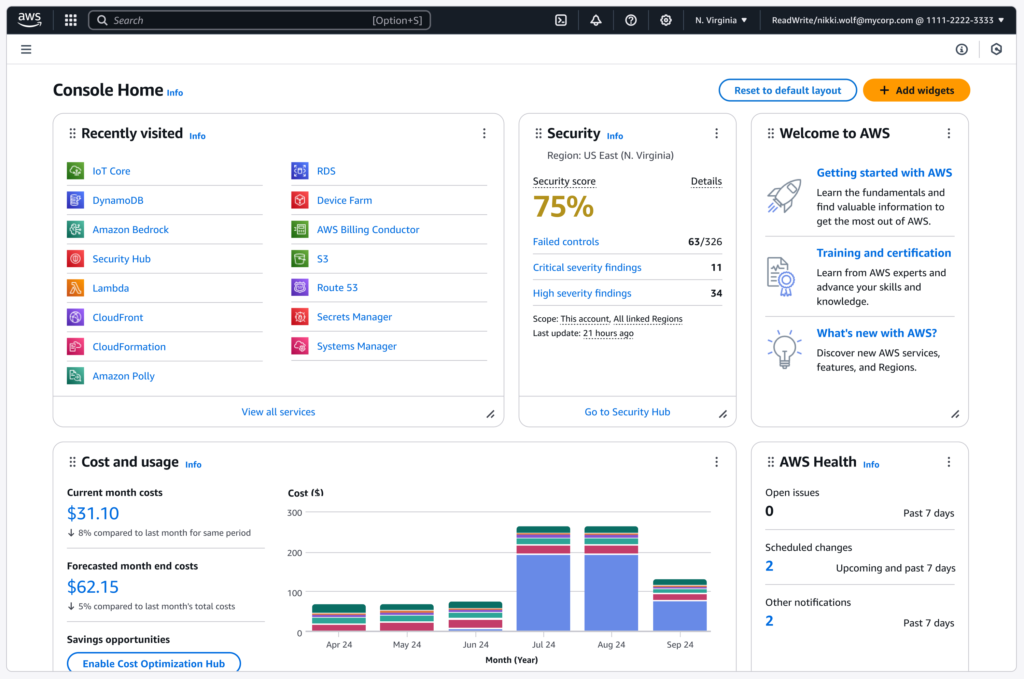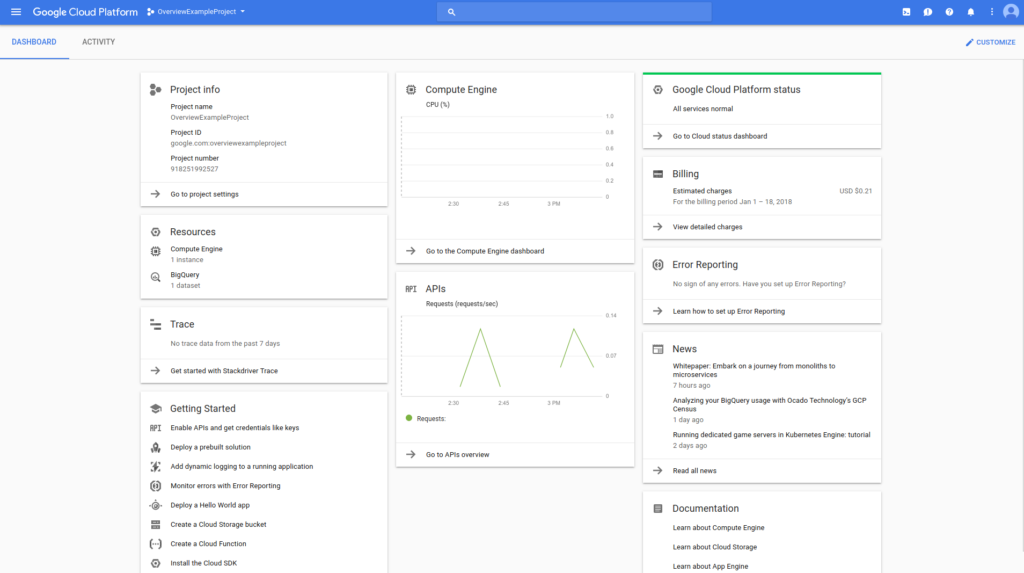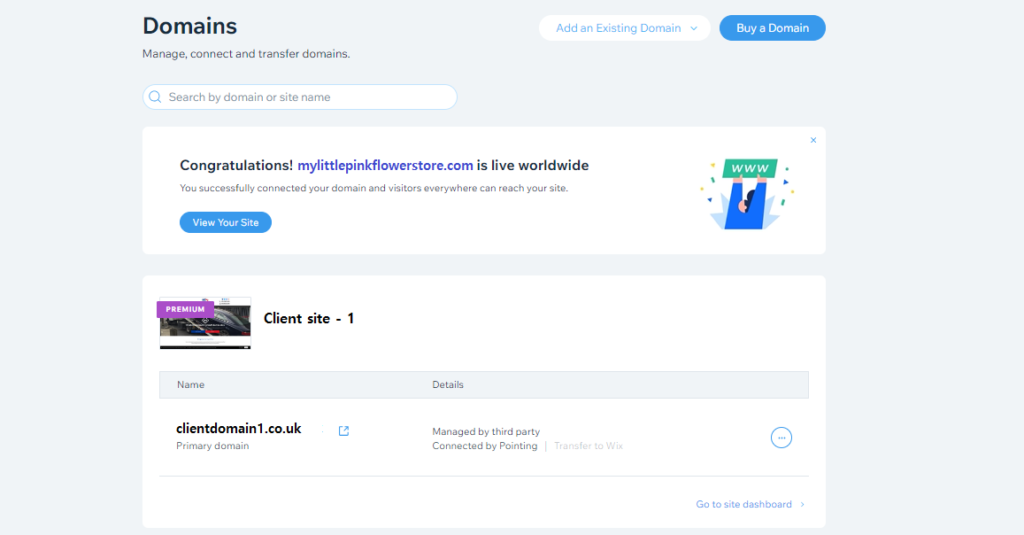TL;DR for devs
- AWS — Best for scalable, production-grade backends with full .NET and container support. Powerful but complex.
- Google Cloud — Great for quick prototyping and serverless apps. Developer-friendly and polished.
- GoogieHost — Only good for basic static or PHP sites. Avoid for anything modern or mission-critical.
- Weebly — Ideal for no-code portfolios or landing pages. Secure, fast, and easy to use, but limited functionality.
- Wix — Best for visual sites with interactive frontends. Supports client-side scripting, but no backend logic.
Free website hosting has come a long way, offering scalable infrastructure, polished site builders, and serverless platforms. However, when choosing the right solution for your project, security matters as much as features and ease of use.
With a developer-first focus, this guide breaks down five of the best free hosting services — AWS, Google Cloud, GoogieHost, Weebly, and Wix. Whether you’re here to hosting a site for personal projects or finding a great hosting provider for your small business, these services offer great pros despite a few limitations.
We’ll cover the good, the bad, and the trade-offs, including the security implications of each platform. Whether you’re building a serverless API or a personal website, this list will help you find the best free web hosting service for your needs.
Read: Web Hosting for Small Business: Which is Best for Pricing, Tools, Performance, and Flexibility?
Amazon Web Services (AWS) — Enterprise power with a learning curve
AWS is the gold standard for scalable infrastructure and cloud services. It’s great for developers who want full control over their application stack and are ready to handle more complex configurations.

Best use case
Scalable cloud applications, serverless APIs, and apps expected to grow into production.
Not ideal for
Developers looking for quick setup, beginner-friendly interfaces, or simple static site hosting without infrastructure complexity.
What’s included in the free tier
- 750 hours/month of EC2
- 1 million Lambda executions
- API Gateway, S3, and DynamoDB usage
- Free for 12 months (select services remain free beyond)
Pros for developers
- Full support for .NET, Python, Node.js, Java, Go, containers
- Integration with DevOps pipelines and IaC tools
- Enterprise-level security and monitoring
- Rich SDK ecosystem and deployment flexibility
Limitations and drawbacks
- Complex setup and configuration
- Many services not fully included in the free plan
- Higher risk of overage charges
- Requires upfront time investment to learn
Security considerations
- Fine-grained identity and access management via IAM
- Integrated DDoS protection and encryption for data at rest/in transit
- Audit logging with CloudTrail and CloudWatch
- High security, but misconfigurations (e.g. open S3 buckets, loose IAM roles) are a common pitfall
Google Cloud Platform (GCP) — Developer-friendly and fast to deploy
Google Cloud delivers a polished developer experience with strong tooling, excellent docs, and flexible free-tier options. It’s one of the best free web hosting websites for testing ideas securely and quickly.

Best use case
Prototyping, serverless applications, and container-based microservices.
Not ideal for
Large, persistent applications with heavy storage or database needs that exceed the platform’s always-free limits.
What’s included in the free tier
- 1 F1 App Engine instance
- Cloud Functions and Cloud Run
- 1 GB egress traffic and Cloud Storage
- $300 free credit for 90 days
Pros for developers
- Easy CLI tooling and project setup
- Native support for containers and major runtimes
- Great for serverless or CI/CD-driven workflows
- Helpful dashboards, monitoring, and logs
Limitations and drawbacks
- Cold starts can slow down free-tier apps
- Cloud SQL and other databases not included
- Limited always-free usage for persistent services
- YAML-based configuration adds setup steps
Security considerations
- Built-in support for IAM, OAuth, and service accounts
- Automatic HTTPS and data encryption
- Real-time logging and alerting via Operations Suite
- Strong security defaults, but access control setup requires attention
GoogieHost — Hobby-friendly, not production-ready
GoogieHost is a free, cPanel-based host offering traditional web tools like PHP and MySQL. It’s more suited for personal pages, blogs, or beginner projects rather than dynamic apps or production APIs. While limited in flexibility, it stands out in the free website hosting space for users with basic needs and no backend logic.

Best use case
Static sites or simple PHP/MySQL websites.
Not ideal for
Modern frameworks, backend APIs, secure applications, or anything requiring uptime reliability and performance guarantees.
What’s included in the free tier
- 1 GB SSD storage
- 100 GB bandwidth/month
- Free subdomain
- SSL, email, and cPanel dashboard
Pros for developers
- Easy-to-use for static sites or legacy projects
- Familiar shared hosting environment with cPanel
- Includes domain management and basic security tools
- No-code required for setup or file uploads
Limitations and drawbacks
- No support for Node.js, .NET, or containers
- Poor uptime and limited support reliability
- Branding and ads included
- Lacks modern features found in the best free web hosting site options
Security considerations
- Free SSL certificate included, but limited configuration control
- Shared hosting architecture increases surface area for vulnerabilities
- Minimal transparency on patching or server hardening
- Better suited for non-sensitive content and low-risk projects
Weebly — Simple static site builder with fast results
Weebly is a top choice for developers or designers who want fast, no-fuss static sites. While great for client projects or portfolios, it’s not designed for custom app logic or secure backend integration.

Best use case
Portfolios, resumes, and landing pages for hosted APIs.
Not ideal for
Full-stack web apps, dynamic user interfaces, or any backend integration beyond basic forms.
What’s included in the free tier
- Weebly-branded subdomain
- SSL and page builder
- Mobile-responsive templates
- Contact forms and basic SEO tools
Pros for developers
- Incredibly fast site creation and deployment
- No coding required for great-looking results
- Good for client-facing or proof-of-concept sites
- Secure and responsive by default
Limitations and drawbacks
- No support for server-side code
- Limited customization without upgrading
- Ads displayed on free tier
- Not viable for dynamic or database-driven apps
Security considerations
- HTTPS is standard on all sites
- Data security is managed entirely by Weebly (closed system)
- No backend access means less control over auth and data validation
- Safe for static content, but not suited for handling sensitive user data
Wix — Visual-first with developer-friendly extensions
Wix provides a robust design platform supporting client-side scripting and API consumption. While it doesn’t run backend code, its Velo development environment allows developers to build interactive pages that connect to external services. It’s one of the best free web hosting websites for polished presentations or dashboards.

Best use case
Interactive frontends, portfolios, and API-connected user experiences.
Not ideal for
Backend-heavy applications, secure data processing, or projects needing server-side authentication and authorization.
What’s included in the free tier
- Wix-branded subdomain
- 500 MB storage and bandwidth
- Site builder with templates
- Velo by Wix for scripting
Pros for developers
- Easy-to-use platform with strong design tools
- Scripting support through Velo (JavaScript)
- Great for frontends tied to backend APIs
- Rapid deployment and hosting bundled in
Limitations and drawbacks
- No server-side code or runtime support
- Ads and subdomain branding included
- JavaScript-only logic limits stack flexibility
- No direct file access or backend storage
Security considerations
- HTTPS enabled automatically
- App logic runs client-side, so APIs must handle validation and authentication
- Limited visibility into how data is managed behind the scenes
- Adequate for public-facing projects, but not ideal for storing private or regulated data
Free vs. “Cheap‑Enough”: Where the real costs hide in free web hosting offers
Bumping your budget from $0 to the price of a latte can unlock a very different experience—one that saves you hours of 2 a.m. triage and a few awkward client emails. Here’s what actually changes once you put a card on file:
|
What you unlock |
Why it matters to devs |
Typical entry cost |
| 99.9 % uptime SLA | Keeps production APIs from dropping 503s and protects SEO rankings. | $5–$7 / mo (shared), $10–$15 / mo (managed VPS) |
| Custom domain + branded email | Adds trust signals and clean SPF/DKIM for transactional mail. | ~$10 / yr domain, $6 / mo mailbox |
| Ad‑free pages | Removes host banners that scream “demo.” | $5–$10 / mo |
| Larger CPU / RAM / DB caps | Prevents random throttling or forced upgrades on launch week. | 2–4× free‑tier limits, host‑specific |
| 24 / 7 support + auto‑backups | A human on call and nightly snapshots slash mean‑time‑to‑recovery. | $7–$12 / mo |
Takeaway:
For anything with users — or a boss — “nearly‑free” hosting pays for itself the first time prod wobbles. Stick to the $0 tier for sandbox experiments and hack‑night demos; upgrade the minute “hobby” becomes “ship it.”
More affordable paid alternatives to free web hosting
Here are a few alternatives to free web hosting worth a few minutes to consider. The difference can be night and day:
ScalaHosting
Offers managed VPS plans that start around the price of a streaming subscription yet include dedicated resources, free daily backups, and an easy path to upgrade without migrating code. If you’ve outgrown free caps but still want SSH, SFTP, and isolated performance, Scala can be a painless step up.
GoDaddy
Well‑known for domains, GoDaddy’s low‑tier shared hosting bundles a free domain, one‑click WordPress, and 24/7 phone support—handy when you’d rather ship features than wrangle DNS. Its global PoPs give small sites faster first‑byte times than most free tiers.
DreamHost
For a few dollars a month you get unlimited traffic, solid SSD storage, and automatic Let’s Encrypt certificates—plus the company’s 97‑day money‑back policy if you change your mind. Developers who prefer open‑source stacks appreciate DreamHost’s transparent uptime reporting and full shell access.
Read: Bluehost vs GoDaddy: Which Web Host is Right for You?
Developer reality check: 8 questions to ask before you deploy
Free hosting hides its sharp edges behind shiny dashboards. Run through this quick audit before you smash the “Launch” button:
1. Will I hit a hard cap or silent throttle?
Check CPU, RAM, and concurrent‑request limits; set usage alerts so prod doesn’t crawl when you hit Reddit.
2. Can I take all my data with me?
Verify there’s an export button for databases, files, and DNS records — lock‑in starts the moment you can’t.
3. Does the runtime match my stack roadmap?
Today’s Node 20 is tomorrow’s Node LTS+1; pin the versions you need or plan to containerize.
4. Is HTTPS truly end‑to‑end?
Some hosts terminate TLS at a proxy, leaving your app talking plain HTTP. Confirm the full chain stays encrypted.
5. How are secrets managed?
Look for an encrypted env‑var store or KMS integration. If you’re pasting tokens into a settings form, back away.
6. Who owns the logs?
You want raw request and DB logs for debugging and audits — not a read‑only slideshow that disappears after 24 hours.
7. Where does the data physically live?
Region choice affects latency and compliance. “US‑only” matters if your users — or regulators—say so.
8. What’s the upgrade path?
Is the paid tier the same hardware with higher limits, or an entirely new platform that forces a rebuild?
Bookmark this checklist so the next teammate doesn’t learn these lessons the hard way.
FAQs
What is the best free web hosting service for full-stack applications?
For full-stack apps that require backend logic, database connections, and API routing, AWS and Google Cloud Platform (GCP) are the strongest options. Both provide free tiers with support for containers, serverless functions, and persistent storage — plus integration with developer tools like GitHub, Docker, and CI/CD workflows.
Can I host a secure website on a free hosting platform?
Yes, but it depends on the platform. AWS and GCP offer enterprise-grade security, including encryption, IAM policies, and network controls. Site builders like Wix and Weebly also provide HTTPS by default but don’t allow fine-grained security configuration.
Are there hidden costs in free web hosting services?
Most platforms clearly define their free tier limits, but exceeding them can trigger charges — especially with AWS and GCP. Always monitor your usage and set up billing alerts if available.
Can I upgrade from free to paid hosting later?
Absolutely. All listed platforms offer upgrade paths, whether you’re scaling compute resources on AWS/GCP or removing branding on Weebly/Wix.
Is free hosting suitable for production?
Yes, with caveats. If configured properly, AWS and GCP can support low-traffic production apps. Free hosting is best for MVPs, personal projects, and testing — not high-demand, mission-critical workloads.

